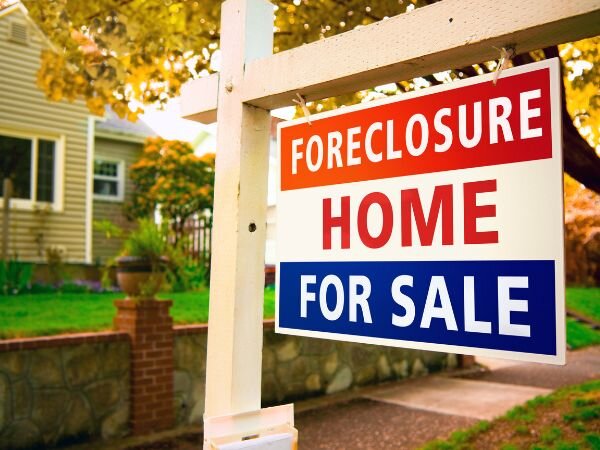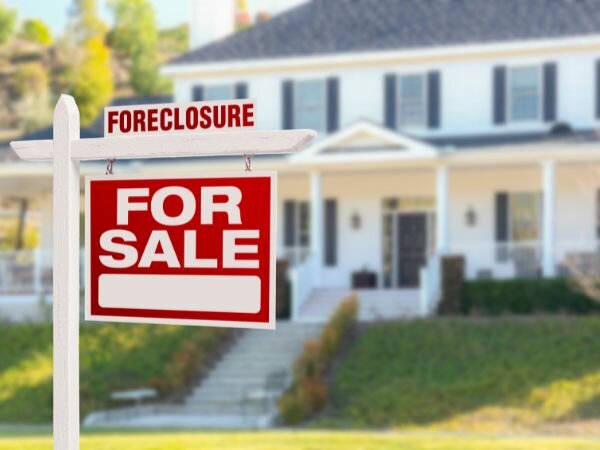
Navigating the foreclosure process in California can be overwhelming and stressful. Our guide provides a clear and concise overview of the legal steps and procedures involved in both nonjudicial foreclosure and judicial foreclosures. From notices of default to trustee’s sales, we break down the process in plain language and help you understand your rights as a homeowner. Whether you’re facing forfeiture or simply want to be prepared, our guide is an essential resource to help you stay informed and in control of your financial future. So keep on reading!
Understanding the Foreclosure Process in California

Understanding the foreclosure process is crucial for homeowners facing financial difficulties. In California, foreclosure can either be judicial or nonjudicial. In a nonjudicial foreclosure, the lender can foreclose on a property without going to court. The process starts with the lender recording a notice of default, which gives the homeowner 90 days to bring the loan current or face foreclosure. After 21 days, the lender can record a sale notice, and the property can be sold 21 days later. Homeowners can stop the foreclosure by paying the loan balance or arranging a loan modification.
In a judicial foreclosure, the lender must file a lawsuit to foreclose on a property. The homeowner has the right to contest the lawsuit, which can delay the forfeiture process. If the court grants a judgment in favor of the lender, the property can be sold to repay the loan. Understanding the repossession process in California and the applicable laws can help homeowners facing financial difficulties avoid forfeiture and keep their homes. Homeowners should consult with an attorney or housing counselor for guidance on how to proceed.
The Notice of Default: What It Means for California Homeowners
If you’re a California homeowner and you’ve missed some mortgage payments, you may receive a notice of default from your lender. The notice of default is the official declaration that you’re in default on your mortgage, and it’s the first step in the forfeiture process in California. The notice will inform you of the amount you’re behind on your payments, how much time you have to bring your mortgage current, and the consequences if you don’t. It’s essential to act quickly if you receive a notice of default, as ignoring it can result in losing your home in a foreclosure sale.
Under California law, lenders are required to wait at least 120 days from the recording of the notice of default before proceeding with a foreclosure sale. During this time, you may have the opportunity to work with your lender to avoid avoid forfeiture. You can try to negotiate a loan modification, repayment plan, or other alternatives to keep your home. It’s important to keep communication open with your lender and respond to their requests promptly. If you’re unable to work out a solution with your lender, you may want to consider seeking legal advice or other options to stop the forfeiture process.
Foreclosure Auctions: What Homeowners Should Know
As a homeowner facing foreclosure, understanding the auction process is crucial. In California, foreclosure auctions can be either non-judicial foreclosure or judicial, depending on the terms of your mortgage and the specific foreclosure procedures in your county. In a nonjudicial foreclosure, the lender must file a default notice and a sale notice, 20 days before the sale. Homeowners have until five business days before the sale date to stop the foreclosure by paying the full amount owed or filing for bankruptcy.
In a judicial foreclosure, the lender must file a lawsuit against the homeowner and obtain a judgment and order allowing them to sell the home at auction. The homeowner has the right to contest the foreclosure in court, but if the lender prevails, the home will be sold at a public auction. Whether you’re facing a nonjudicial or judicial foreclosure in California, it’s important to understand your options and take action to avoid foreclosure if possible. Consider reaching out to a foreclosure attorney or exploring alternatives to foreclosure, such as loan modification or short sale, to protect your home and financial future.
California Foreclosure Process: Foreclosure Law and Procedures

After missing several payments, the lender sends the borrower a default notice, starting the foreclosure process. This notification gives the borrower time to fix the default before the lender starts foreclosure. The lender may register a sale notice if the borrower does not repair the default during this period. The sale must occur at least three months after the default notice and at least 20 days before the notice of sale.
California law requires the notice of sale to be mailed to the borrower and posted on the property 20 days before the sale. Before the selling date, the borrower must pay the whole loan amount, including fees and expenses, to avoid foreclosure. Loan modification or short sale may help the borrower avoid foreclosure. A foreclosure attorney can help homeowners through the complex legal process and examine all their options to save their homes.
Ways To Stop A Foreclosure: Options to Avoid Foreclosure in California
Ways to avoid Foreclosure
Facing a foreclosure and stopping it can be a challenging and stressful process, but it is not impossible. If you are a homeowner facing forfeiture in California, here are some ways to stop the process:
Loan Modification: You can work with your lender to modify your loan terms, such as lowering the interest rate, extending the loan term, or adding missed payments to the end of the loan.
Forbearance Agreement: You can request a forbearance agreement from your lender, which allows you to temporarily suspend or reduce your mortgage payments for a specific period.
Sell the Property: If you are unable to afford your mortgage payments, you may consider selling your property before the foreclosure process is complete. Selling the property can help you pay off the mortgage and avoid the negative impact of foreclosure on your credit score.
Short Sale: A short sale is an agreement between the lender and the homeowner to sell the property for less than the amount owed on the mortgage. This option can help you avoid foreclosure and reduce the impact on your credit score.
Bankruptcy: Filing for bankruptcy can put an automatic stay on the forfeiture process, which can provide temporary relief and time to explore other options. However, it is important to consult with a bankruptcy attorney to understand the potential long-term consequences.
Understanding the Notice of Sale in Foreclosure Cases
The California notice of sale informs the foreclosure sale date and time. A notice of sale gives homeowners a little time to stop the sale and save their house. The sale date, place, and trustee are crucial to understanding the notice of sale. Homeowners should also consider bankruptcy, loan modification, or selling the property to stop the forfeiture sale.
Foreclosure Laws in California: Protections for Homeowners

California has some of the strongest forfeiture laws in the United States, offering significant protections for homeowners who may be at risk of losing their homes. The state law requires lenders to follow specific procedures before foreclosing on a property, including providing homeowners with notice of default and giving them the opportunity to cure the default. In addition, California law allows homeowners to request a foreclosure mediation program to try and avoid foreclosure. The mediation program can help borrowers work out a new payment plan or loan modification with their lenders. Homeowners can also seek legal assistance and explore other options to stop the forfeiture, such as selling the property or filing for bankruptcy. Understanding these forfeiture laws and protections is crucial for homeowners in California who are facing financial difficulties and potential foreclosure.
What are the Steps in the Foreclosure Process
- Notice of default: The lender files a notice of default (NOD) with the county recorder’s office, indicating the borrower has defaulted on their mortgage.
- Pre-foreclosure period: The borrower has a 120-day pre-foreclosure period to try and resolve the default and bring the loan current.
- Notice of trustee sale: If the borrower does not resolve the default, the lender files a notice of trustee sale (NOTS), which sets the date and time of the foreclosure auction.
- Foreclosure auction: The property is sold to the highest bidder at a public auction conducted by the trustee.
- Trustee’s deed: If the property is sold at auction, the trustee issues a trustee’s deed to the new owner.
- Redemption period: The borrower has a right of redemption period of up to one year after the sale to reclaim the property by paying the outstanding debt, interest, and costs to the new owner.
Note that the specific timeline and requirements may vary depending on the type of foreclosure and individual circumstances. It is recommended to seek legal advice for guidance on the foreclosure process.
The Bottom Line
California homeowners can take comfort in the fact that the state has implemented regulations to protect them during the loan servicing and foreclosure process. Although California deeds of trust allow lenders to foreclose on residential properties without court proceedings, homeowners still have options to avoid foreclosure, including sending a loan payment before the foreclosure sale date in a nonjudicial foreclosure. Homeowners who work in California can be assured that their home is managed appropriately, and lenders are required to send a notice before initiating a foreclosure lawsuit. It is crucial for homeowners to understand the foreclosure process and their options, and seeking guidance from an experienced attorney can help them navigate the process successfully.

